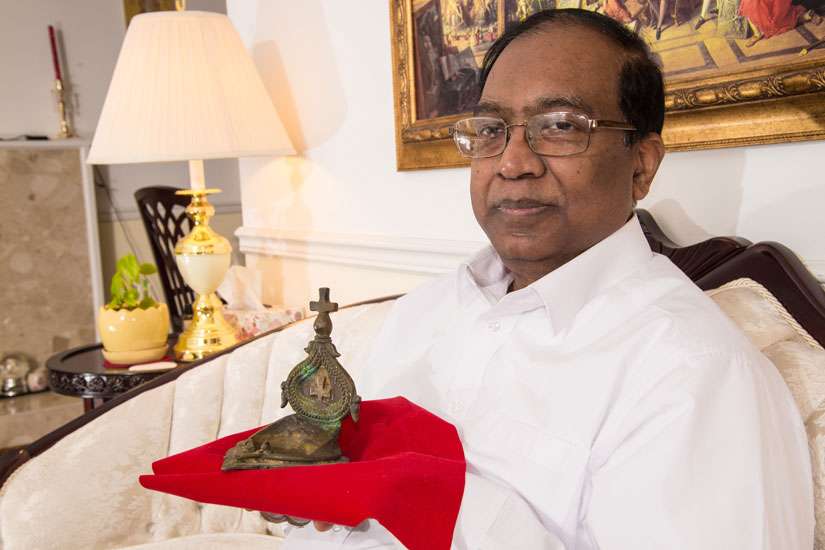A small, 16th-century bronze lamp crowned with a cross, decorated with a braid pattern typical of the Portuguese, was given to Chandrakanthan by parishioners of his old parish in the village of Sillalai, just outside Jaffna, Sri Lanka. There’s no way of proving it, but Sillalai Catholics believe the lamp had been used by St. Joseph Vaz, the Indian missionary priest who kept the faith alive among Catholics during Dutch Protestant rule.
Pope Francis canonized St. Joseph Vaz at a Mass in Sri Lanka Jan. 14, the first leg on a one-week pastoral trip to Asia that ended in the Philippines Jan. 19. The Pope called on Catholics today to emulate the new saint by spreading the Gospel with “missionary zeal.”
For Sri Lankans, whether Christian, Hindu or Buddhist, a lamp is never just a lamp, explains Chandrakanthan.
“In our culture, light plays a big role,” he said.
Weddings begin when the bride lights a lamp. There’s a lamp of blessing in every home. Prayers, from ordinary household prayers to high liturgies, cannot begin until someone lights a lamp.
It’s a tradition and cultural practice that bears particular significance for Sri Lanka’s Catholics who kept the flame of faith burning through the Dutch persecution of 1656 through 1796. Early in the Dutch period, the new colonial masters had declared any practise of Catholic religion illegal.
“All subjects and inhabitants belonging to this commandant are strictly forbidden to practise any Roman Catholic rites and ceremonies in public or attend the same on the penalty that the holder of such gathering shall pay 12 rix-dollars and those who are caught attending the same three rix-dollars each… and if it can be discovered by whom such meeting was summoned and the ceremonies performed, they shall be put into chains for three years without mercy and sent to Colombo,” reads a Dutch edict or plakaat issued shortly after the Dutch takeover of Ceylon.
“We were really in the catacombs,” said Chandrakanthan. “Every Mass was for them a death and resurrection.”
Vaz arrived in the island nation disguised as a coolie or agricultural labourer. When he was discovered in Jaffna, local Catholics there decided he was in too much danger in the big town. They moved him to Sillalai, a very Catholic village known even today as “Little Rome.” There he was kept in hiding from the Dutch authorities.
Even before he learned to speak Tamil, Vaz was able to recognize the Catholic households by songs and prayers he heard while passing, and by their lamps. Sillalai Catholics maintained their underground Church despite the military rule that imposed the Dutch Reformed Church.
“They were hunted for,” said Chandrakanthan. “There was persecution all around but they were a joyful community.”
For Chandrakanthan the gift of the small lamp is among his most treasured mementos from Sri Lanka, a reminder of having served in the same parish as a man who put his life on the line for the faith of his parishioners.

